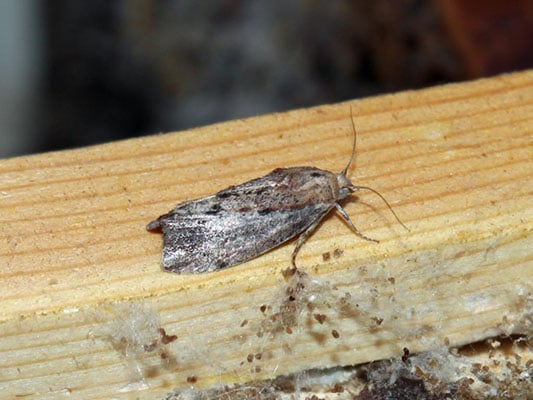There are two species of wax moth in Australia. These are the greater wax moth Galleria mellonella and the lesser wax moth Achroia grisella. Both can cause significant damage. Wax moth is primarily a concern for stored combs, but may also be a problem for weak colonies.
Adult wax moths are highly attracted to old brood combs. Larval growth rate is faster and adult moths are bigger, live longer and produce more eggs when they are reared on old brood comb.
Wax moths are active between 18-38oC, with optimal temperatures being 28-30oC. Temperature has a large effect on development time. Both species are in all Australian states and territories, and they are a particular problem in the tropics and subtropics.

Above: The life cycle of the wax moth
Preventing damage to stored combs
Cool room: At 4oC all stages of wax moth development will be suspended, and it may kill some stages. Temperatures as high as 180C also suspend development
Hot room: Combs stored at 46oC for 1-3 hours will kill all life stages
Freezer: Combs stored at -7oC for 4-5 hours will kill all life stages
Aluminium phosphide (phosphine gas): A highly toxic gas requiring a fumigator licence for use in NSW. This toxic gas can be used to kill all life stages. It is, however, toxic to insects, mammals and humans and may leave residues in the wax. It is therefore not recommended.
Commercial moth control preparations available in supermarkets are not suitable for wax moth control, or registered for use in bee hives, and may leave residues in honey and beeswax.


